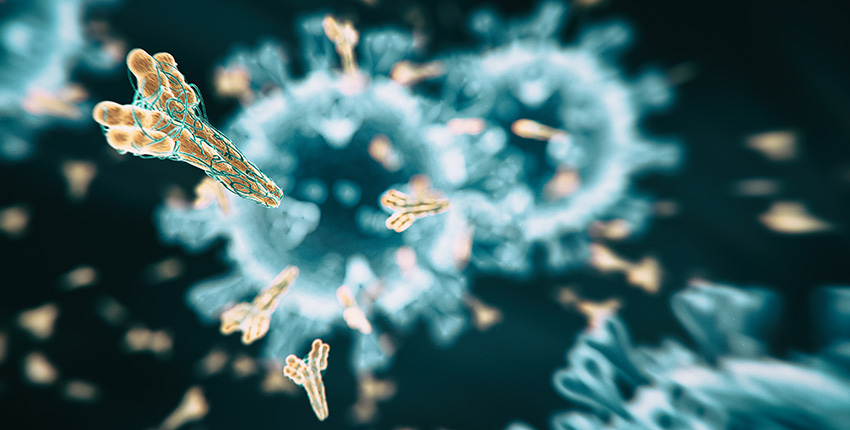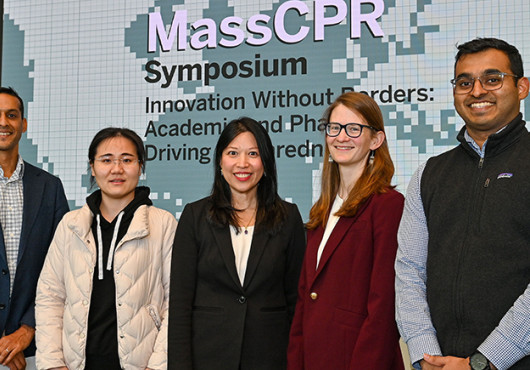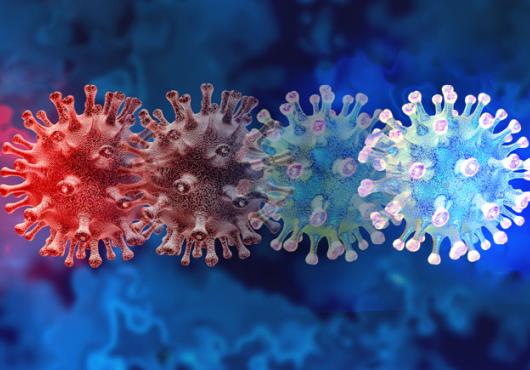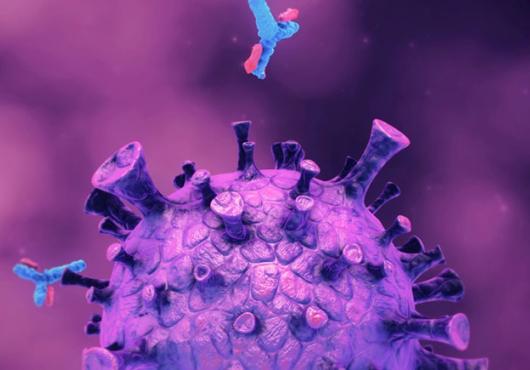
Image: koto_feja/iStock/Getty Images Plus
This article is part of Harvard Medical School’s continuing coverage of medicine, biomedical research, medical education, and policy related to the SARS-CoV-2 pandemic and the disease COVID-19.
From asymptomatic infections to lethal disease, COVID-19 is remarkable in its ability to affect people differently. Indeed, one of the most baffling questions about the disease has been why the same virus causes such widely varying illness.
The difference has been especially striking between children and adults.
Compared with adults, children are far more likely to have minimal or no illness when infected with SARS-CoV-2. Yet, a small subset of them develop a serious inflammatory condition called multisystem inflammatory syndrome in children (MIS-C). In rare cases, MIS-C can affect the heart and require hospitalization and intense medical support.
Now a newly published study by Harvard Medical School investigators at the Ragon Institute of MGH, MIT, and Harvard and Massachusetts General Hospital sheds much-needed light on the drivers behind such different disease manifestations in both children and adults.
The work, published Feb. 12 in Nature Medicine, indicates that specific types of antibodies may be driving these different responses. One antibody class portended more severe disease in adults, whereas another antibody appeared to fuel MIS-C in children.
The results are based on detailed immune-function profiles of blood samples from 42 children and 60 adults with COVID-19.
“We noticed children who developed MIS-C had high levels of a specific type of antibody called IgG,” said study co-senior author Lael Yonker, HMS assistant professor of pediatrics and co-director of the Cystic Fibrosis Center at Mass General. “Normally, IgG acts to control an infection, but with MIS-C, the IgG is triggering activation of immune cells, which may be driving the severe illness seen in MIS-C.”
Specifically, explained Yonker, IgG, or immunoglobulin G, antibodies interact with immune cells called macrophages, which live throughout various tissues in the body where they patrol for signs of infection and destroy the invaders they encounter. The inflammation seen in MIS-C, Yonker said, could be the result of too many IgG antibodies activating an army of macrophages that in turn fuel inflammation in various organs.
High levels of IgG antibodies were found only in children who developed MIS-C after contracting COVID-19. They were markedly absent in adults who had gotten COVID-19 and in children who had mild or asymptomatic infections.
Yonker runs a biorepository that collects samples from pediatric cystic fibrosis patients. When the pandemic hit, she began to collect samples from children with mild cases of COVID-19. When Yonker and other pediatricians began seeing children hospitalized with what is now called MIS-C—which typically develops three to six weeks after asymptomatic or mildly symptomatic SARS-CoV-2 infection—she quickly began collecting those samples too. She wanted to understand why a subset of children develop a severe inflammatory illness weeks after exposure to SARS-CoV-2, whereas the illness caused by the virus, COVID-19, is mostly subtle with few mild symptoms in this young population.
Seeking a detailed understanding of immune responses, Yonker teamed up with Galit Alter, HMS professor of medicine and an immunologist in the Division of Infectious Diseases at Mass General.
The researchers used an approach called systems serology developed by Alter and colleagues to perform a detailed comparison of the immune responses in 42 children, 17 with MIS-C and 25 with mild COVID-19, with the immune responses of 60 adults, 26 with severe disease and 34 with mild disease.
The analysis showed that adults with severe COVID-19 had elevated levels of IgA (immunoglobulin A) antibodies, known to interact with immune cells called neutrophils they are activated in response to infection. Neutrophils can, in turn, trigger the release of inflammatory molecules known as cytokines that can drive widespread inflammation. The observation of elevated IgA levels in those with severe COVID-19, the researchers said, suggests that high IgA may initiate a cascade that culminates in so-called cytokine storm, a hallmark of severe organ-damaging inflammation that often occurs in severe COVID-19.
“We were expecting the children’s immune responses to look drastically different from the adults’ regardless of the severity of disease,” said Alter, who also co-leads the pathogenesis working group of the HMS-led Massachusetts Consortium on Pathogen Readiness (MassCPR). “But instead, we found that adults with mild COVID-19 and children with COVID-19 had remarkably similar immune responses. It was only the adults with severe COVID-19 whose immune responses looked different.”
In both cases, the study shows that high levels of two different antibodies may be driving disease severity in children and adults.
“In MIS-C, high levels of IgG antibodies may be activating macrophages, which can drive inflammation in organs throughout the body,” said study first author Yannic Bartsch, HMS research fellow in medicine at Mass General and the Ragon Institute. “In adults with severe COVID-19, high levels of IgA antibodies could be driving neutrophils to release too many cytokines, with the potential of causing a cytokine storm.”
Identifying the immune mechanisms of multiple, distinct responses to the same virus is the first step to understanding why it mounts different responses in different populations. Discovering how the immune system’s response shapes the disease and its outcome in both children and adults can help researchers develop treatments that can prevent or modulate the immune response, keeping its protective functions while lessening its harmful ones.
The work was funded by the National Heart, Lung, and Blood Institute (5K08HL143183); Cystic Fibrosis Foundation (YONKER18Q0); National Institute of Allergy and Infectious Diseases (U19 AI135995); donations from Nancy Zimmerman, Mark and Lisa Schwartz, an anonymous donor (financial support), and Terry and Susan Ragon; SAMANA Cay MGH Research Scholar award; Ragon Institute of MGH, MIT, and Harvard; MassCPR; National Institutes of Health (3R37AI080289-11S1, R01AI146785, U19AI42790-01, U19AI135995-02, U19AI42790-01, and CIVIC75N93019C00052); Centers for Disease Control and Prevention (U01CK000490); National Cancer Institute’s SeroNet (U01CA260476); Musk Foundation; and Global Health Vaccine Accelerator Platforms (OPP1146996).
Disclosures: Galit Alter is a founder of SeromYx Systems, a company developing a platform technology that describes the antibody immune response. Alter’s interests were reviewed and are managed by Mass General and Partners HealthCare in accordance with their conflict of interest policies. All other authors have declared that no conflicts of interest exist.
Adapted from a Ragon Institute news release.








